Updates are a necessary part of any operating system as they not only improve the system’s performance but also help in user experience enhancement. Kali Linux is one of the most preferred Linux distributions when it comes to testing the vulnerability of any system or network. So, it is essential to keep Kali updated as sometimes updates also affect the functionality of pre-installed tools or applications. This guide will discuss the process of updating Kali Linux in detail.
Updating Kali Linux
Kali Linux can only be updated using different combinations of upgrade commands as there is no GUI-based method to update Kali Linux. Before updating Kali Linux you can check the current version of the Kali operating system by executing the command below:
cat /etc/os-release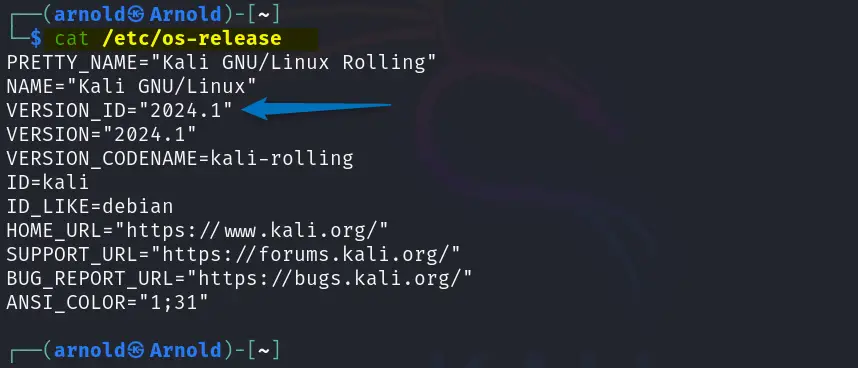
Before updating Kali Linux it is necessary to update the packages list of the Kali’s default app installer:
sudo apt update

Updating Kali Linux Packages
If you are looking to update the Kali Linux packages then use the upgrade command. This will only install the updated versions of apps whose newer versions are available. In short, this command only updates the available updates for applications installed on Kali:
sudo apt upgrade
Further, keep in mind that this command does not remove or reinstall the already installed packages. On executing the sudo apt upgrade on Kali Linux you might encounter some errors at the end so to fix them use the –fix-missing flag with the upgrade command as given below:
sudo apt upgrade --fix-missing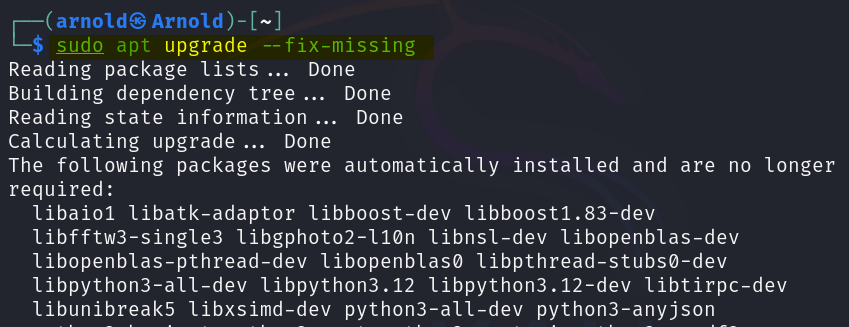
Once you are done with the upgrade reboot the system to apply the changes.
Updating Complete Kali Linux
If you are looking to have a system update for Kali Linux then use the full flag with the upgrade command. This will not only install the new packages to satisfy the dependencies but can also remove any conflicting packages. Further, it also performs comprehensive system upgrades which also include its OS version and kernel as well.
sudo apt full-upgrade -y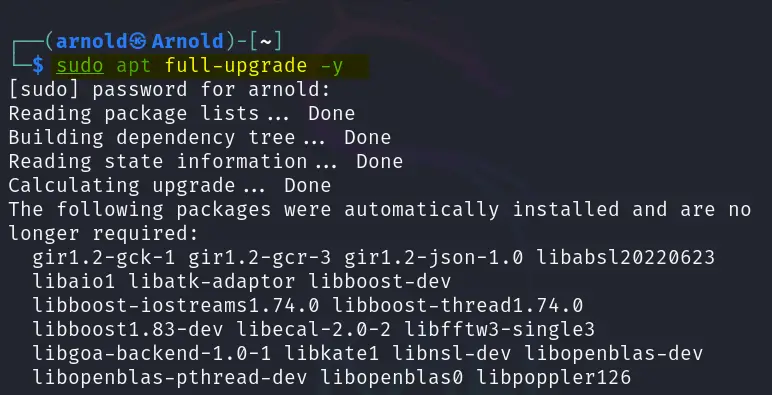
After executing the apt full-upgrade command check the system version by executing the following command:
cat /etc/os-releaseHere you can see that the Kali version has been changed:
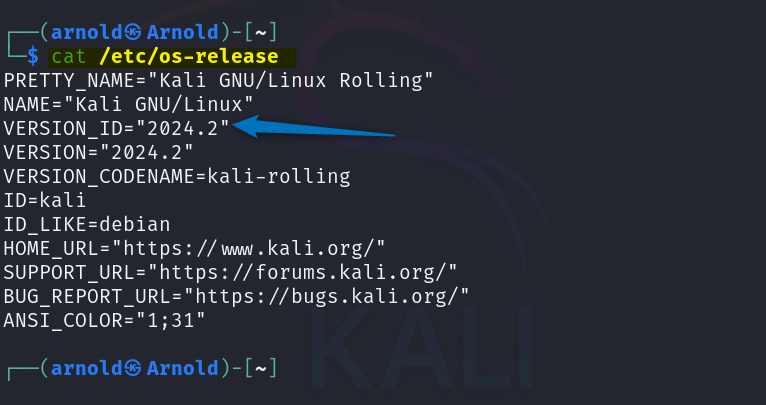
There is another way to fully update the Kali Linux and that is by using the dist flag with the upgrade command. Here is the below command:
sudo apt dist-upgradeBoth the apt dist-upgrade and apt full-upgrade commands serve the same purpose:
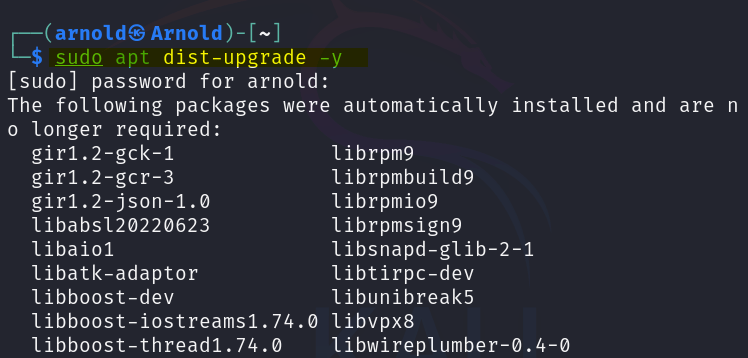
Note: Before using any of the above update commands it is recommended to see the sources list file as it has software repositories that are used by the system to upgrade. To simply read the file execute the below command:
cat /etc/apt/sources.list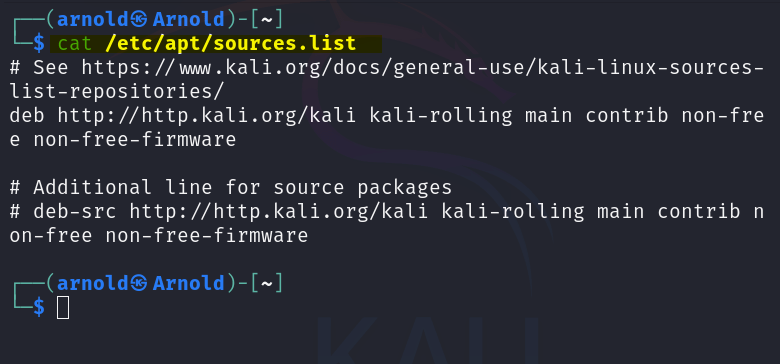
The sources list of Kali should have the following data:
# See https://www.kali.org/docs/general-use/kali-linux-sources-list-repositories/
deb http://http.kali.org/kali kali-rolling main contrib non-free non-free-firmware
# Additional line for source packages
# deb-src http://http.kali.org/kali kali-rolling main contrib non-free non-free-firmwareFurther, if you want to install the latest or desired kernel version on Kali Linux then use the below-given command syntax::
sudo apt install linux-image[kernel-version-kali-linux-version]Updating a Specific Package in Kali Linux using the apt Package Manager
Another thing that you might wanna do is to update any specific package in Kali. This is useful if you are looking to install only specific packages so in that case use the below syntax:
sudo apt install --only-upgrade [package-name]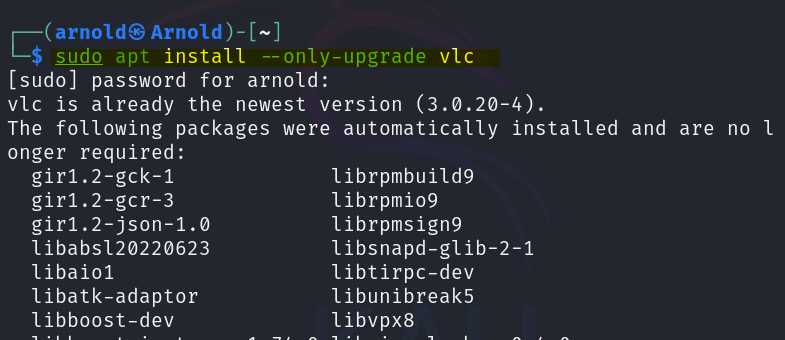
Conclusion
To update Kali Linux you can use the apt full-upgrade command or apt dist-upgrade command. However, if you want to just update the packages on Kali then use the apt upgrade command. Further, if you want to update only specific packages on Kali Linux then use the apt install –only-upgrade [package-name] command.
